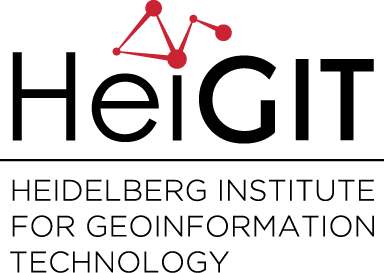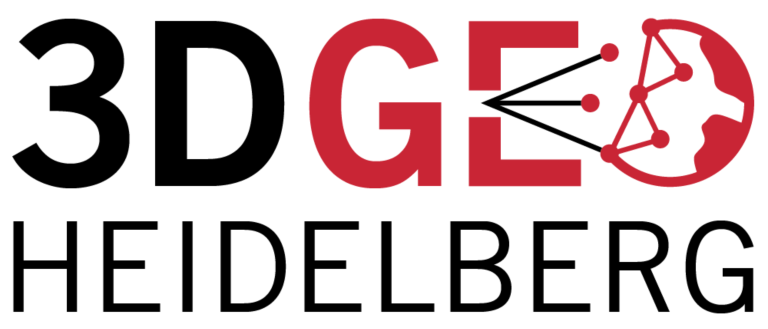Category: Research
-
GRÜNFLÄCHEN IN STÄDTEN FÖRDERN WOHLBEFINDEN; ‘Nature’ Neuroscience Studie mit Beteiligung der Geoinformatik der Universität Heidelberg veröffentlicht:
INTERDISZIPLINÄRE STUDIE ZEIGT, DASS INNERSTÄDTISCHES GRÜN UNMITTELBAR EINFLUSS AUF STADTBEWOHNER HAT Innerstädtische Grünflächen wie Rasen, Blumenbeete, Bäume oder Parks können unmittelbar das Wohlbefinden im Alltag von Stadtbewohnern verbessern. Das zeigt eine aktuelle Studie, die Wissenschaftler des Zentralinstituts für Seelische Gesundheit (ZI) in Mannheim gemeinsam mit Geoinformatikern der Universität Heidelberg und Forschern des Mental mHealth Lab…
-
HeiGIT beim Tag der offenen Tür beim Auswärtigen Amt
Am 16. und 17. August öffnet das Auswärtige Amt in Berlin die Tore für die Öffentlichkeit. An diesen Tagen kann nicht nur das Auswärtige Amt selbst besichtigt werden, verschiedene Diplomaten, Vertreter verschiedener Ministerien, Einrichtungen und Organisationen werden vor Ort sein, um aktuelle Projekte und Ideen vorzustellen. In diesem Rahmen wird es auch einen „Humanitären Raum“…
-
Mapping Human Settlements with Higher Accuracy and Less Volunteer Efforts by Combining Crowdsourcing and Deep Learning
Our new paper on Machine Learning and Humanitarian Mapping Nowadays, Machine Learning and Deep Learning approaches are steadily gaining popularity within the humanitarian (mapping) community. New tools such as the ML Enabler or the rapId editor might change the way crowdsourced data is produced in the future. Hence, at the Heidelberg Institute for Geoinformation Technology…
-
Successfull PhD defence by Michael Auer on 3D WebGIS
Last month Dr. Michael Auer successfully defended his PhD on Advancing 3D WebGIS – browser-based Methods for Visualization and Analysis and their Integration in Virtual Research Environments in the Context of Cultural Heritage . We congratulate cordially! We are happy to have Michael with us as in the Big Spatial Data Analytics team of HeiGIT…
-
New ORS Jupyter example about Fleet Scheduling for Disaster Response with ORS and VROOM
Routing optimization in a humanitarian context Routing optimization generally solves the Vehicle Routing Problem (a simple example being the more widely known Traveling Salesman Problem). A more complex example would be the distribution of goods by a fleet of multiple vehicles to dozens of locations, where each vehicle has certain time windows in which it can operate…
-
Colloquium on Place in GIScience
We cordially invite everybody interested to our next open GIScience colloquium talk! The speaker is Dr. René Westerholt from the Centre for Interdisciplinary Methodologies, University of Warwick, UK. When: Monday 29.07.2019, 2:15 pm Where: INF 348, room 015 (Institute of Geography, Heidelberg University) Place in GIScience – A human geographic overview of the components to…
-
Waterproofing Data: Pilot Study in Brazil
A pilot study for the Waterproofing Data project took place in Brazil (Rio Branco and São Paulo) last month. Carolin Klonner from the GIScience team and researchers from the UK and Brazil focused on testing the developed methods in the specific setting of the study areas and on exploring the flood mitigation measures taken by…
-
meinGrün @roadto_festival: What OSM tells us about urban green space features
Where is the next shaded bench to escape the burning heat? Where can I play soccer within the city and later on have a barbecue with my friends? All of these questions require information about features of urban green spaces. Although it is easy to find the right place within your own neighbourhood, it is…
-
Multi‐temporal 3D point cloud‐based quantification and analysis of geomorphological activity at an alpine rock glacier using airborne and terrestrial LiDAR
Change analysis of rock glaciers is crucial to analyzing the adaptation of surface and subsurface processes to changing environmental conditions at different timescales because rock glaciers are considered as potentially unstable slopes and solid water reservoirs. To quantify surface change in complex surface topographies with varying surface orientation and roughness, a full three‐dimensional (3D) change…
-
Program of Academic Track for State of the Map 2019 Heidelberg is online
Also the program of the “Academic Track” for ‘State of the Map‘ (SotM) as been released now. Early bird ticket prices are still available until 7th of July. See the website for all the details: 2019.stateofthemap.org Two contributions are by members of the GIScience Research Group Heidelberg: Analyzing the spatio-temporal patterns and impacts of large-scale data…
-
AGEO Award 2019 at AGIT in Salzburg: Third place for Lukas Winiwarter
3DGeo group member Lukas Winiwarter was awarded the third place of this year’s AGEO award at the AGIT2019 in Salzburg for his diploma thesis on “Classification of 3D Point Clouds using Deep Neural Networks”. It was carried out at TU Wien under the supervision of Dr. Gottfried Mandlburger and Prof. Dr. Norbert Pfeifer, and has…
-
Do you need a shady route because it is too hot?
IT IS HOT! So you are looking for a more shady pedestrian route through the urban jungle? You might then prefer some routes that go through public green spaces with trees and bushes. Thank goodness we are working already on such green and also shady routing together with some partners in the mFund project meinGrün.…


